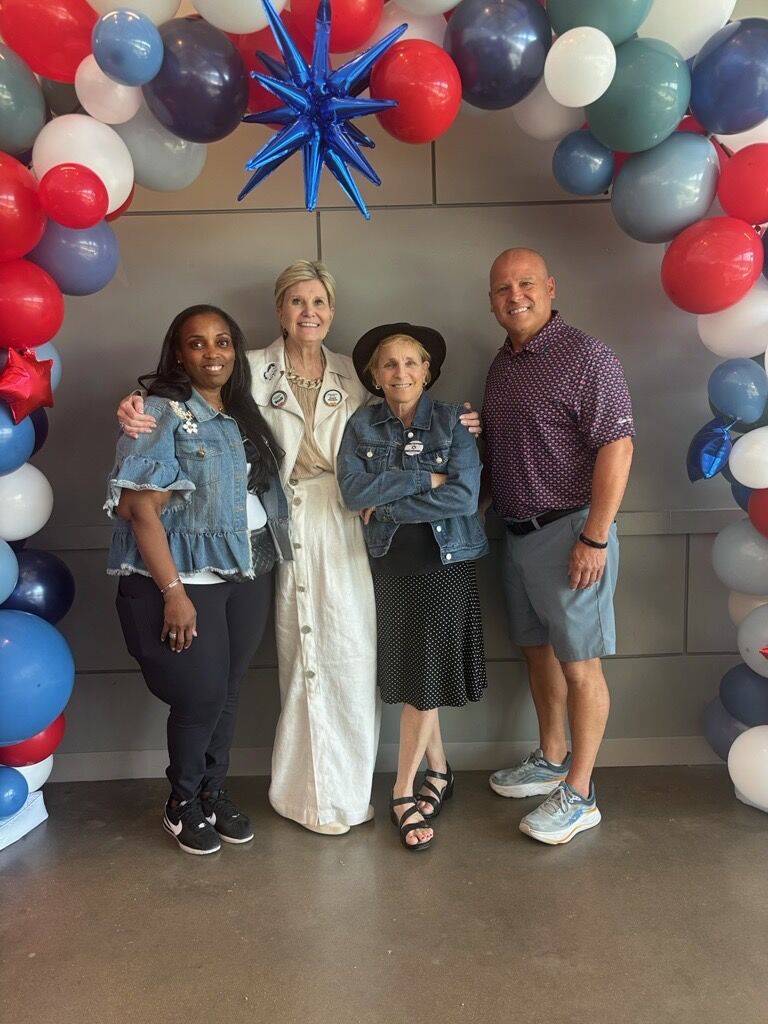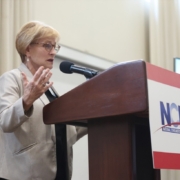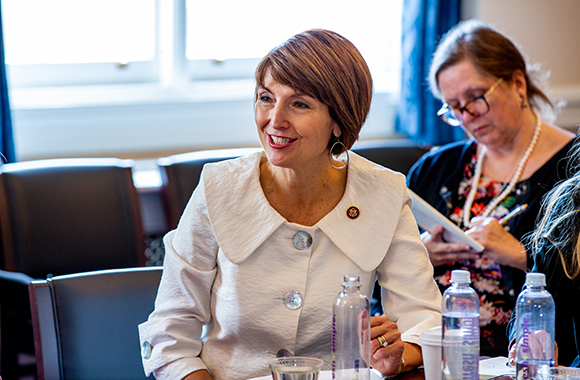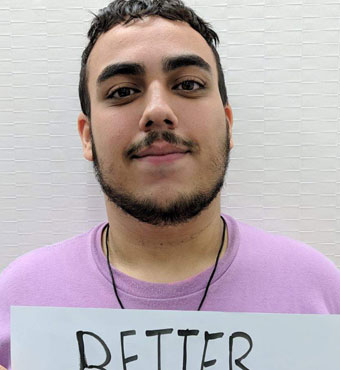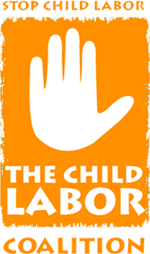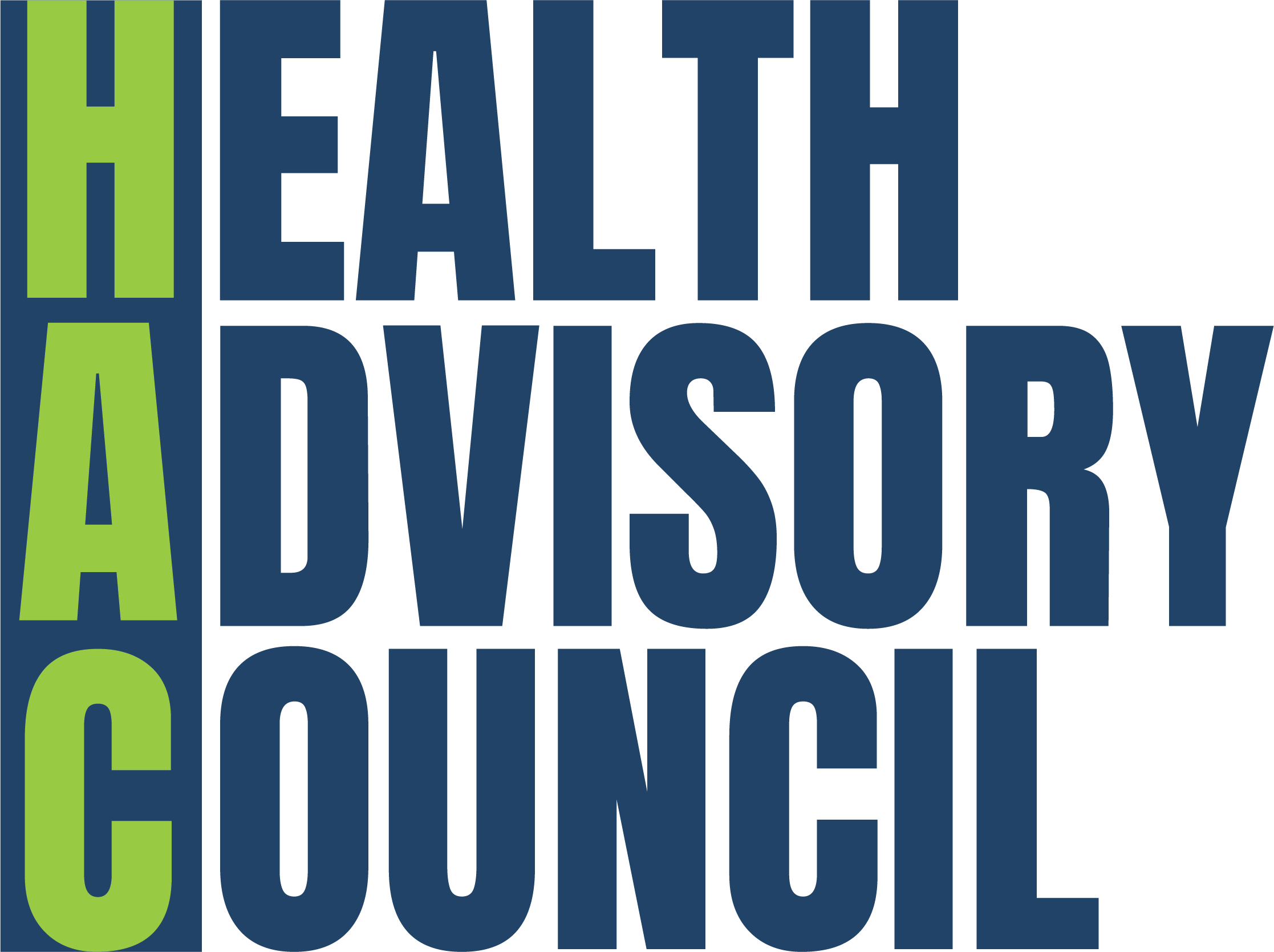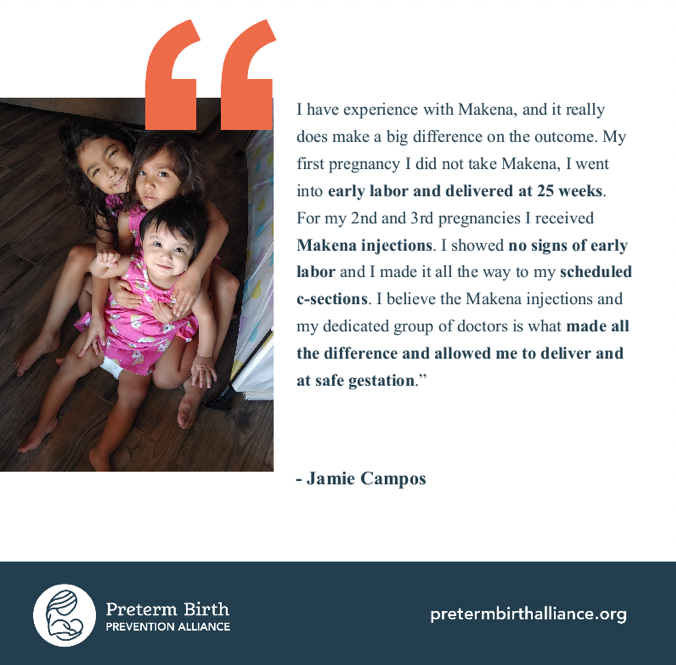The East Wing Was More Than a Building — It Was a Legacy of Women’s Leadership
By Maggie Oliverio, NCL Media Relations Associate
As a child, I always dreamed of living in Washington, working in politics, making a real difference, and having a life like the ones my favorite characters in books, movies, and television shows led. I idolized women like our first ladies —Jackie Kennedy, Lady Bird Johnson, Nancy Reagan, Laura Bush, and Michelle Obama —as well as working women in Washington, like Judy Smith, Representative Jan Schakowsky, and Diane Sawyer.
In 2023, it was finally my time. I had graduated from college and was elated to start my first job on Capitol Hill. In my role, I had the opportunity to take part in many extraordinary experiences, but the most joyous was the White House. The East and West Wing, Rose Garden, Executive Office building, and yes, even the private bowling alley.
The East Wing was one of those places: pale light, quiet footsteps, portraits watching from the walls, time slowed as you walked in. It felt like a bridge between the ceremonial and the practical, between the pageantry of the presidency and the daily work of the people who kept the place running. So, when I learned that the East Wing would be reduced to rubble to make room for a ballroom, I was devastated. How could that be possible? I was just there a mere 10 months ago, touring with my friends, admiring the First Lady’s portraits and holiday lights. This wasn’t just a building being torn down. It was history—personal and national—being erased with startling speed.
Built during World War II under Franklin Roosevelt, the East Wing’s above-ground structure was created partly to conceal an underground emergency bunker system. Over time, the East Wing evolved into something more than an architectural appendage. It became the domain of the First Ladies, a space where women—often dismissed as presidential appendages — ran complex portfolios, crafted policy initiatives, and built their own leadership teams. For decades, some of the most influential work affecting American families, education, public health, and military families happened in those rooms.
For someone like me, who came into government service believing deeply in the power of female representation, that mattered. Our first ladies are not ornamental; they are public servants. These hard-working women have given up privacy, personal dreams, and peace of mind to serve a role that demands grace under relentless scrutiny.
When the ballroom project was first introduced, we were assured that the East Wing would be preserved. That promise evaporated the moment the demolition equipment rolled in. The American people understand homes need repairs and renovations, but this was not a facelift. We were lied to. The East Wing wasn’t renovated—it was demolished; its structure and symbolism treated as disposable.
Buildings carry stories. The East Wing was full of them: Roosevelt’s wartime bunker construction, Jackie Kennedy’s restoration plans, Laura Bush’s library and literacy work, Nancy Reagan’s social office machine, and Michelle Obama’s Let’s Move! Team. Even the less visible staff—ushers, schedulers, policy aides, military social aides—left their fingerprints. It held generations of American life inside its walls.
The administration says the new ballroom is privately funded, and on paper, that may be true. The construction costs—hundreds of millions—are being covered by a mix of Trump’s money and a network of donors but “cost to the taxpayer” isn’t just about a line in the federal budget.
There are other costs, less obvious but more corrosive:
· Security costs, which inevitably fall to taxpayers, will rise with a new, larger, more complex structure.
· Maintenance of the expanded footprint will fall to federal budgets long after the donors’ checks stop clearing.
· Oversight shortcuts taken during the rapid approval process set precedents that future administrations will inherit—and taxpayers will pay for those mistakes.
A privately funded government building is never truly free. Who gets invited to give? Whose interests align with the White House? What foreign actors see as a “donation” is an investment with expected returns?
These aren’t abstract concerns. They strike at the heart of the very system the East Wing represented: public service rooted in institutional and historical continuity, not personal favor.
For me, the loss is both political and personal. The knowledge that a place where women led, organized, strategized, and influenced national conversations has been erased. There is something eerily prolific for our current climate that a place that held so much history—specifically women’s history—was removed out of preference, not necessity. Out of vanity. And with no public input, even though this was truly the people’s house.
This one stings, and it should, for every taxpayer, every young girl who dreamed of walking those historic halls once inhabited by our First Ladies, and every American who believes in “for the people, by the people.”







